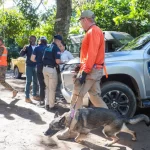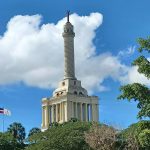Significant reduction in banking deserts across the Dominican Republic

Santo Domingo.- Between 2020 and 2024, the number of municipalities in the Dominican Republic classified as “banking deserts”—areas without branches, ATMs, or bank subagents—decreased from eleven to just one, according to the Banking Deserts study published by the Superintendency of Banks (SB).
The study highlights that the expansion of banking access points (PAB) in 2023 aligns with a nine-year trend, reducing banking deserts from 20 in 2015 to two by the end of 2023.
According to the report, Los Cacaos in San Cristóbal is now the only area in the country where residents must travel to another district to access banking services.
In 2023, in addition to Los Cacaos, the Cristóbal municipality in the Independencia province was also a banking desert. However, in the first quarter of 2024, Banco del Reserva opened the first PAB in Cristóbal, eliminating its status as a banking desert.

From 2015 to 2023, the estimated population without access to PAB decreased dramatically from 128,906 to just 12,789 people, representing a 90% reduction.
By the end of 2023, ATMs were the most prevalent banking access point nationwide, with 3,528 ATMs (48.4% of the total), followed by 2,070 bank subagents (28.4%), and 1,692 branches (23.2%), amounting to a total of 7,290 PAB.
Regional Breakdown
The SB report, which has been monitoring districts with limited access to PAB since 2015, shows that the southern region has traditionally had more banking deserts. In contrast, the eastern and northern regions have seen their number of banking deserts decrease to zero by 2021 and 2023, respectively.
The metropolitan area, comprising Santo Domingo province and the National District, has maintained PAB in all municipalities since 2015, the baseline year for the report.
In 2023, Greater Santo Domingo had 3,068 PAB, Cibao had 2,322, the eastern region had 1,050, and the southern region had 850.
Report and Strategic Objectives
The analysis by the SB supports strategic objective 2.4 of the National Financial Inclusion Policy, which emphasizes the importance of determining the availability and access to financial services nationwide and sets a goal to enhance outreach through local establishments.
In developing countries and some rural areas, banking deserts remain common, making it challenging for people to access essential financial services like savings accounts, loans, and financial advice. This situation often forces the population to rely on the informal sector, which can entail higher costs and greater risks regarding guarantees and user protection.
















